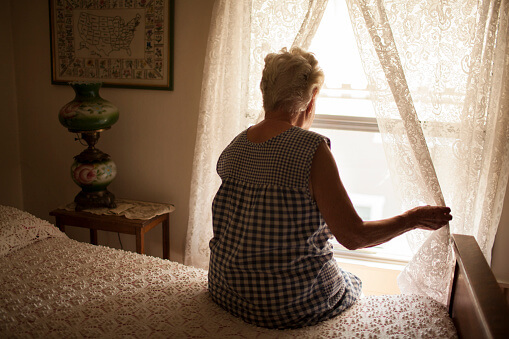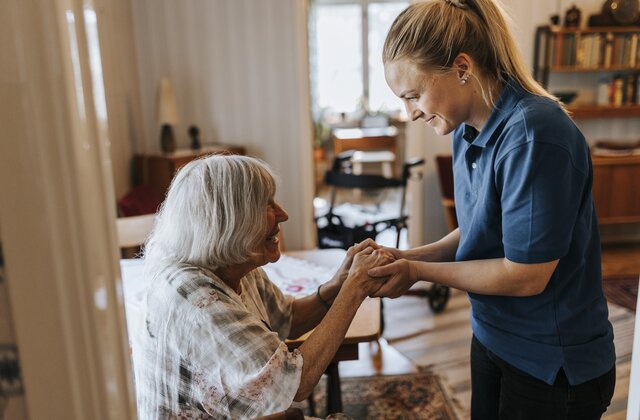As loved ones age, ensuring their safety becomes a major concern for family caregivers. A significant aspect of elderly safety is the prevention and detection of falls, which can lead to serious injuries. Knowing how to convince seniors to use fall detection devices is crucial in enhancing their safety and ensuring peace of mind for both the seniors and their families.
Fall detection devices have evolved significantly, offering a variety of features that cater to the needs of seniors. However, convincing them to adopt these technologies can be challenging. In this article, we will explore effective strategies to encourage seniors to embrace fall detection devices, ensuring their well-being and independence.

Understanding the Importance of Fall Detection
Falls are a leading cause of injury among seniors. According to the CDC, millions of older adults experience falls each year, resulting in both physical and psychological consequences. The use of fall detection devices can significantly reduce the risk of serious injuries by promptly alerting caregivers and emergency services.
What are Fall Detection Devices?
Fall detection devices are wearable technologies designed to detect falls and alert caregivers or emergency services. These devices use sensors and algorithms to differentiate between normal movements and falls, ensuring accurate alerts. They provide an essential safety net for seniors who wish to maintain their independence while being assured of immediate assistance when needed.
Types of Fall Detection Devices
Various types of fall detection devices are available, including wearable pendants, smartwatches, and sensor-based systems. Each type offers unique features and benefits, making it essential to choose the right device based on individual needs and preferences. For more information on privacy-friendly solutions, visit Privacy-friendly solutions.
Addressing Seniors’ Concerns
Understanding the concerns of seniors is vital in convincing them to use fall detection devices. Common concerns include privacy issues, cost, and perceived loss of independence. Addressing these concerns with empathy and providing clear information about how these devices can enhance their safety and autonomy is crucial.
Privacy and Security
Many seniors worry about their privacy when it comes to technology. It is important to reassure them that modern fall detection devices are designed with privacy in mind. They can learn more about privacy-friendly options by visiting Smart technology.
Cost Considerations
Cost is another significant concern. While fall detection devices can be an investment, discussing the potential costs of injuries from falls and the benefits of immediate assistance can help justify the expense. Many devices also offer affordable plans and options, making them accessible to a wider audience.
Highlighting the Benefits
To convince seniors to use fall detection devices, highlighting the benefits is essential. These devices provide peace of mind, allowing seniors to live independently while ensuring help is just a button away. This independence is invaluable for their quality of life.
Peace of Mind for Families
Fall detection devices offer peace of mind not only to seniors but also to their families. Knowing that their loved ones are equipped with a device that offers immediate assistance in case of a fall relieves stress and anxiety for family members. This assurance allows families to focus on enjoying quality time together without constant worry.
Maintaining Independence
One of the most compelling arguments for fall detection devices is their ability to help seniors maintain their independence. With the assurance of immediate help, seniors can confidently engage in daily activities, knowing that assistance is readily available if needed.
Personal Stories and Testimonials
Sharing personal stories and testimonials from other seniors who have benefited from fall detection devices can be a powerful way to convince hesitant individuals. Hearing from peers about the positive impact these devices have had on their lives can build trust and acceptance.
Community Support and Advocacy
Engaging with local community groups and advocacy organizations can provide additional support in promoting the use of fall detection devices. These groups can offer resources, workshops, and demonstrations to educate seniors about the benefits and ease of use of these devices.
Choosing the Right Device
Helping seniors select the right fall detection device is crucial in ensuring their satisfaction and continued use. Consider factors such as comfort, ease of use, and additional features when choosing a device. Consulting with healthcare professionals can also provide valuable insights into the most suitable options.
Consulting Healthcare Professionals
Healthcare professionals, such as doctors and occupational therapists, can offer expert advice on selecting the appropriate fall detection device. Their insights can help address any medical concerns and ensure the chosen device meets the individual’s health needs.
Education and Training
Providing education and training to seniors on how to use fall detection devices is essential for their successful adoption. Offering hands-on demonstrations and support can build confidence and ensure seniors feel comfortable using the technology.
Hands-On Demonstrations
Organizing hands-on demonstrations and tutorials can help seniors feel more comfortable with using fall detection devices. These sessions allow them to familiarize themselves with the device’s features and operation, reducing any apprehension they may have.
Regular Check-Ins and Encouragement
Regular check-ins and positive reinforcement can encourage consistent use of fall detection devices. Celebrate milestones and acknowledge the importance of using the device for their safety and well-being.
Celebrating Milestones
Celebrate milestones and achievements with seniors, such as successfully using the device during a practice session. Positive reinforcement can boost their confidence and encourage continued use of the device.

FAQ Section
What are fall detection devices?
Fall detection devices are wearable technologies that detect falls and alert caregivers or emergency services. They use sensors and algorithms to differentiate between normal movements and falls, providing a safety net for seniors.
How do fall detection devices work?
Fall detection devices work by using sensors to monitor movement and detect falls. When a fall is detected, the device sends an alert to designated contacts or emergency services, ensuring prompt assistance.
Are fall detection devices expensive?
While some fall detection devices can be costly, many offer affordable plans and options. The potential cost savings from preventing fall-related injuries can justify the investment.
For more information on smart elderly care solutions, visit Smart elderly care.
This article contains affiliate links. We may earn a commission at no extra cost to you.






